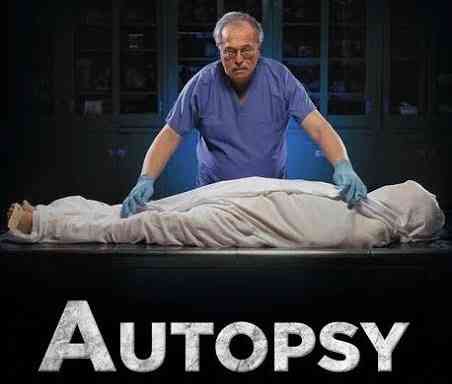The inexorable eventuality of death raises profound questions, not least of which concerns the post-mortem examination, or autopsy. Understanding the temporal parameters surrounding an autopsy unveils a fascinating interplay of legal mandates, practical considerations, and the ever-present quest for diagnostic clarity. When, precisely, does this procedure typically transpire? The answer is less straightforward than one might initially presume.
The Golden Window: Ideal Timeframes
Ideally, an autopsy is conducted as expeditiously as possible after death. A swift examination minimizes post-mortem changes, such as decomposition, that can obfuscate findings and complicate the determination of the cause and manner of death. The concept of a “golden window” exists in forensic pathology, suggesting the sooner the better. This window typically spans within 24 to 48 hours post-mortem. Within this timeframe, cellular degradation is less pronounced, and the accurate interpretation of microscopic and macroscopic findings is enhanced.
Factors Influencing the Timing
Several factors can impinge on the prompt execution of an autopsy. These include:
- Legal and Jurisdictional Requirements: The legal framework governing autopsies varies across jurisdictions. Some locales mandate a medical examiner or coroner’s involvement in cases of unexpected, suspicious, or violent deaths. The timing, therefore, is contingent upon the availability and workload of these officials. A backlog of cases, staffing shortages, or geographical constraints can all introduce delays.
- Family Consent and Notification: In many instances, particularly in hospital settings, family consent is a prerequisite for performing an autopsy. Locating and notifying next-of-kin can take time, especially if the deceased was estranged or lived a solitary existence. The emotional toll on grieving relatives can also lead to delayed consent as they grapple with the decision.
- Hospital Protocols and Resources: Hospitals possess their own internal protocols and procedures regarding autopsy requests and scheduling. Availability of pathology staff, operating room space, and specialized equipment influence the timeliness of the examination. Weekends and holidays may result in reduced staffing levels, further extending the interval.
- Preservation Techniques: In situations where immediate autopsy is not feasible, preservation techniques are employed to mitigate post-mortem changes. Refrigeration, typically at temperatures between 4°C (39°F), slows down decomposition processes. However, refrigeration can also introduce artifacts that must be considered during interpretation. Embalming, while preserving the body, significantly alters tissue structures and renders certain analyses, such as toxicology, unreliable.
- Investigative Needs: In cases involving potential foul play, law enforcement agencies may request delays in the autopsy to allow for crime scene investigation and evidence collection. Premature examination could compromise the integrity of forensic evidence and impede the pursuit of justice.
The Role of Decomposition
Decomposition is an intrinsic biological process that commences immediately after death. Autolysis, the self-digestion of cells by their own enzymes, and putrefaction, the breakdown of tissues by bacteria, are the primary drivers. These processes are influenced by environmental factors such as temperature, humidity, and insect activity. Elevated temperatures accelerate decomposition, while cooler temperatures retard it. Advanced decomposition can render accurate determination of the cause of death more challenging but not always impossible.
Specialized Autopsy Techniques and Timing
Certain specialized autopsy techniques require specific timing considerations. For instance:
- Toxicology Analysis: The detection of drugs or toxins requires prompt collection of blood, urine, and tissue samples. The longer the delay, the greater the likelihood of degradation or metabolism of these substances, potentially leading to false negative results.
- Microbiological Studies: Identification of infectious agents necessitates timely culturing of appropriate specimens. Post-mortem bacterial proliferation can confound the interpretation of culture results and distinguish between ante-mortem infection and post-mortem contamination.
- Neuropathology: Examination of the brain requires careful handling and preservation to minimize artifacts. Delay can lead to significant autolytic changes, making it difficult to assess subtle neuropathological abnormalities.
- Molecular Pathology: Analysis of DNA and RNA is crucial for genetic studies and disease diagnosis. Degradation of nucleic acids can compromise the accuracy and reliability of molecular testing.
Exceptions and Extended Post-Mortem Intervals
While prompt autopsy is generally preferred, exceptions exist where the examination is conducted days, weeks, or even months after death. These situations typically involve exhumations for legal or investigative purposes. In such cases, forensic anthropologists and pathologists employ specialized techniques to analyze skeletal remains and assess any remaining soft tissues. These analyses can provide valuable insights into the individual’s identity, cause of death, and circumstances surrounding their demise, even after prolonged post-mortem intervals. The success of such investigations depends on the degree of preservation and the expertise of the forensic team.
Technological Advancements
Technological advancements are revolutionizing the field of forensic pathology and mitigating the impact of delayed autopsies. Virtopsy, or virtual autopsy, utilizes imaging techniques such as computed tomography (CT) and magnetic resonance imaging (MRI) to visualize the internal organs and structures without invasive dissection. These techniques can provide valuable information even in cases of advanced decomposition. Furthermore, advances in molecular diagnostics and proteomics are enabling the identification of disease markers and causes of death from degraded tissue samples.
A Shifting Paradigm
In conclusion, while the “golden window” for autopsy remains within the initial 24 to 48 hours post-mortem, the actual timing is subject to a complex interplay of legal, logistical, and biological factors. Decomposition poses a formidable challenge, but advancements in preservation techniques and diagnostic methodologies are constantly expanding the boundaries of what can be discerned from the deceased. The future of autopsy lies in a fusion of traditional methods and cutting-edge technologies, promising a more nuanced and comprehensive understanding of death, regardless of the temporal constraints. The very definition of “soon” in the context of autopsy is, therefore, becoming increasingly fluid, reflecting a shifting paradigm in the pursuit of truth.










Leave a Comment